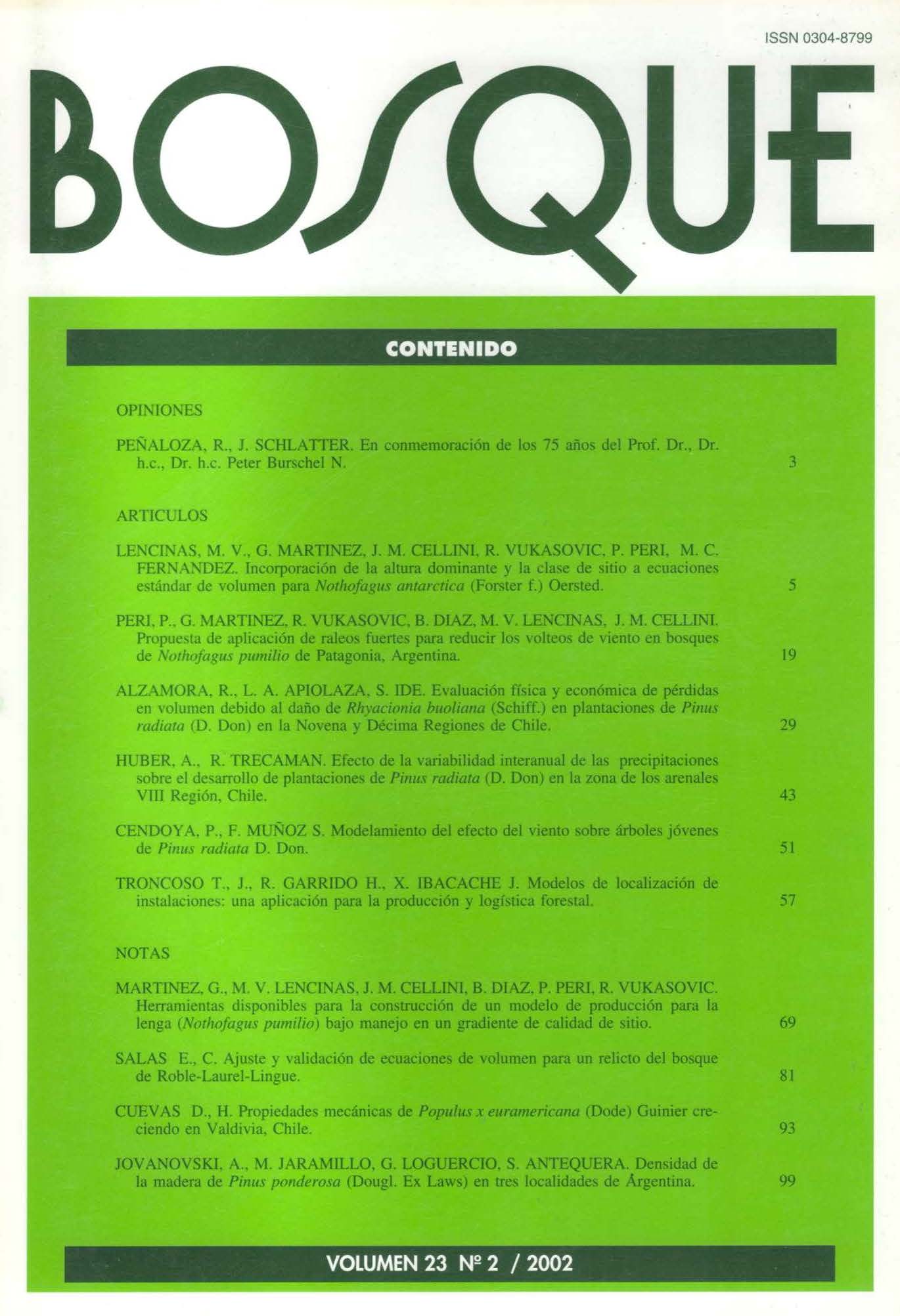Thinning schedules to reduce risk of windthrow in Nothofagus pumilio forests of Patagonia, Argentina
Conteúdo do artigo principal
Resumo
A thinning method is proposed to reduce windthrow risk in a high quality site (SI60= 23.2 m) of lenga (Nothofagus pumilio) forests. Sixty seven-year-old (base age at 1.3 m) even-aged stands were thinned in 1996. The method involved thinning from above to maintain the stand stability and proposed a gradual reduction of crown density increasing the growth of selected trees (target trees). The system was carried out by five successive operations that incorporated the technique of girdling follower trees. Two thinning levels were defined: at 872 stems/ha (light thinning treatment) and 489 stems/ha (heavy thinning treatment). Each treatment had an area of 1 hectare with six long-term plots. Four permanent plots were established as controls and were not thinned. The diameter, basal area and volume growth were recorded for all treatments, and mortality rate and crown class dynamics were measured in the control. Total stem volume over bark and merchantable volume by log type were collected from trees felled in the first thinning intervention. Six year results from this study indicated that the proposed thinning method could achieve maximum growth and simultaneously avoid large gaps between tree crowns that may induce windthrow.

